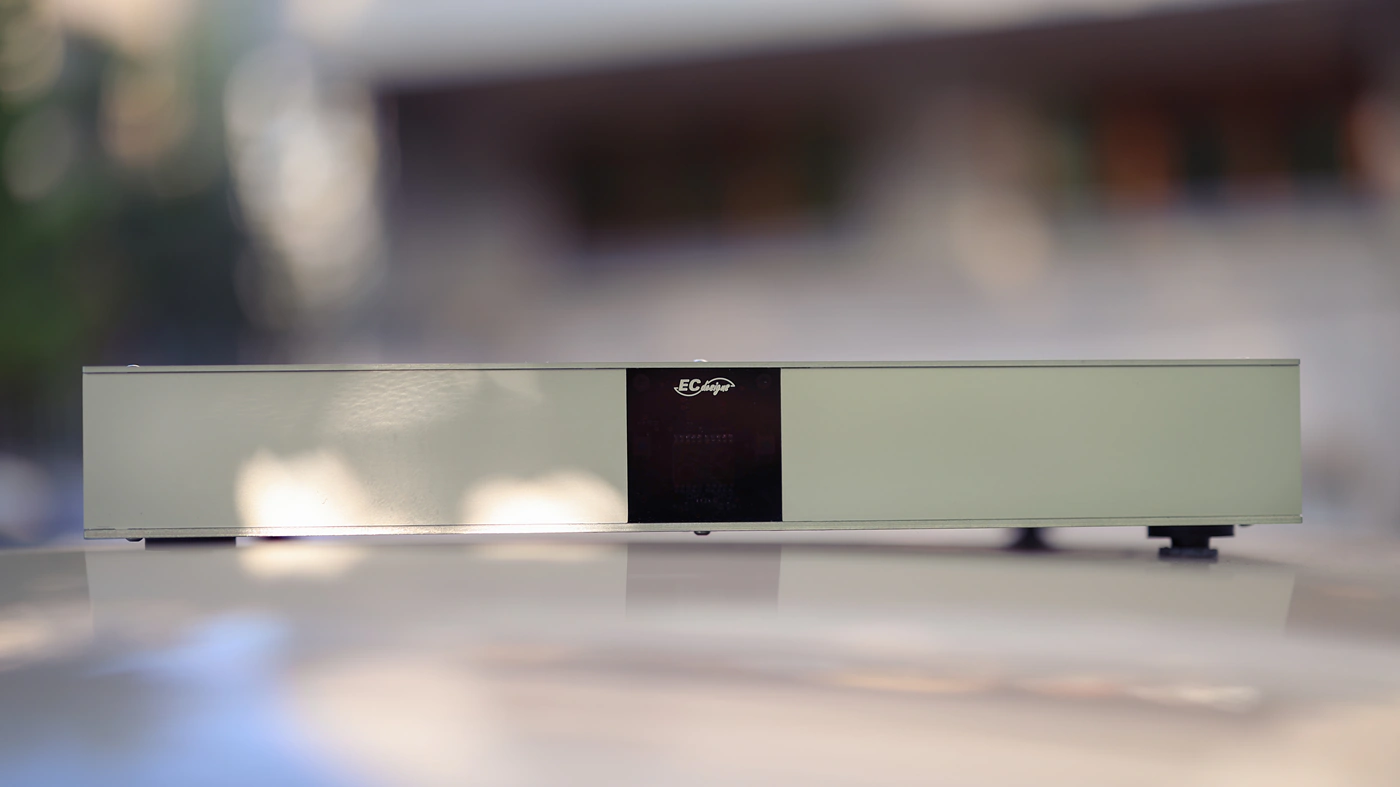I am creating this topic in the "General Audio Forum" as it deals with a product that falls in neither the "Digital Audio Forum" nor the "Power Amplifiers and Preamplifiers Forum", and is worthy of your attention.
I am a (happy) customer - I have rambled about this product on my system thread. There was some discussion about the technology used, and I tried to provide an overview, but I am not a "techie". While the proof is in the pudding, some understanding of what's going on under the hood is of interest, I believe.
The designers of this product - ECDesigns - have recently added to their website a web page describing how this thing works. I find it gives a good overview:
 ecdesigns.nl
ecdesigns.nl
I'm adding here also a picture of the inside:

From rear to front:
- Left and right programmable linear power supplies for the left and right Power D/A converters.
- Left and right black transformers for phantom power supplies for the left and right power D/A converters.
- Center transformer = Linear DAPI power supply.
- Center front board = DAPI board (Digital Audio Parallel Interface)
- Front center = Display keys and IR module
- Left and right front = Power D/A converters for left and right channel
Power D/A converter board power resistors are cooled through heat pads to the chassis. This version is also equipped with XLR headphone connector on front.
If there are questions, I may be able to answer some, otherwise ECDesigns have their email on their website, for those curious to learn more.
I'll be writing a modest "review" of this product. I've been using it for approximately 9 months now, both with digital and analog sources.
I am a (happy) customer - I have rambled about this product on my system thread. There was some discussion about the technology used, and I tried to provide an overview, but I am not a "techie". While the proof is in the pudding, some understanding of what's going on under the hood is of interest, I believe.
The designers of this product - ECDesigns - have recently added to their website a web page describing how this thing works. I find it gives a good overview:
No Amplifiers here. – ECdesigns
I'm adding here also a picture of the inside:

From rear to front:
- Left and right programmable linear power supplies for the left and right Power D/A converters.
- Left and right black transformers for phantom power supplies for the left and right power D/A converters.
- Center transformer = Linear DAPI power supply.
- Center front board = DAPI board (Digital Audio Parallel Interface)
- Front center = Display keys and IR module
- Left and right front = Power D/A converters for left and right channel
Power D/A converter board power resistors are cooled through heat pads to the chassis. This version is also equipped with XLR headphone connector on front.
If there are questions, I may be able to answer some, otherwise ECDesigns have their email on their website, for those curious to learn more.
I'll be writing a modest "review" of this product. I've been using it for approximately 9 months now, both with digital and analog sources.
Last edited:












